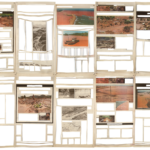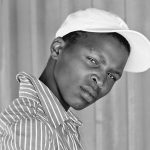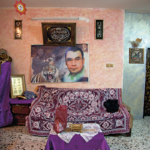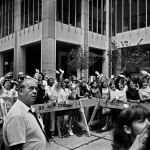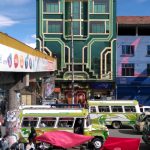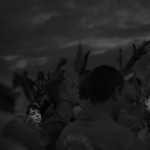Summary 04
Publicado em: 4 de August de 2013THE INDIVIDUAL, the crowd. A traditional genre in the history of photography, a portrait can offer a finely-detailed description of an individual and, at the same time, suggest the existence of a social type. Good portraits do this, and still touch on issues that concern us all. The marginalised figures from the streets of California that Katy Grannan has chosen as her subjects inhabit the boundary that divides reality from fantasy, and force us to think about standards of beauty and gender, the dictates of fashion and our Photoshop’d world. Four decades earlier, Garry Winogrand also took to the streets to make a black and white portrait of the uncertain, incendiary world of post-war America.
The other side of the planet was also experiencing turbulent times. A photojournalist for the Heilongjiang Daily during the Chinese Cultural Revolution, Li Zhensheng hid thousands of negatives under the floor of his apartment. They showed the fervour of the multitudes and the arbitrary nature of Mao Zedong’s regime. Leaving behind the early revolutionary enthusiasm and becoming more aware of what was happening, Li changed, if not history, at least the memory of the 20th century.
Photography can be used as a way of dealing with oppressive realities, of becoming more attentive or simply helping us see better. This is how the renowned sociologist Pierre Bourdieu explained his field-trip to Algeria. In a rare interview, at the end of his life, Bourdieu explains how his 3,000 photographs helped him ellaborate a way of looking that lies at the heart of his sociology.
Other talented pilgrims wander the pages of this issue. The German film-maker Wim Wenders travels from Australia to the American Midwest in a diary filled with notes, friends and photographs. At ZUM’s request, Rosângela Rennó, from Minas Gerais, uses her family’s slides to reinvent her parents’ journey across the United States in 1958. Bárbara Wagner ventures into the state of Pernambuco to show a maracatu very different from the tourist guide books. André Cepeda, from Portugal, gives us a
preview of his residency in São Paulo, accompanied by a 4 x 5 inch camera.
Travel also widened the social and political dimensions of Thomas Struth’s work. In his analysis of the work of the German photographer, sociologist Richard Sennett opens up a debate on how the past, the present and the future are carved onto the faces of cities. Returning to one of the themes of this issue, Struth believes that his urban photos can be seen as portraits. If you consider them as living organisms, buildings always tell the truth. “They are the testimony of people’s character, [they] express pride,
anger, ignorance, love – everything that humans are capable of expressing.”


